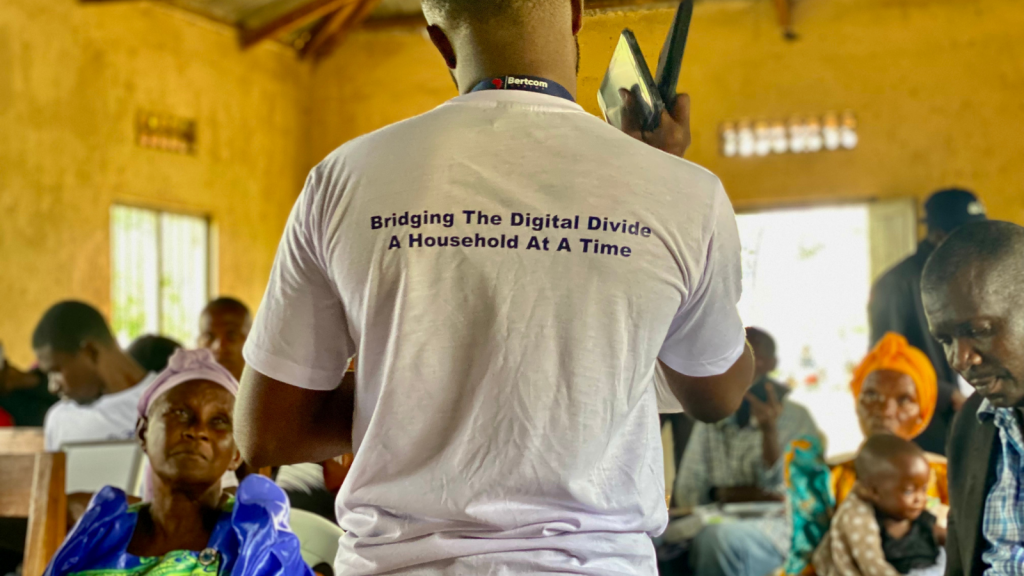This post was written by Sonia Jorge and Onica N. Makwakwa, Executive Directors of the Global Digital Inclusion Partnership (GDIP).
If we successfully reach universal, meaningful, and affordable broadband, the internet can become an inclusive and vibrant online world. High-income countries have been able to demonstrate, with their privilege, the benefit of ubiquitous, affordable internet access. Contactless payments, online appointments, e-learning, innovations in entertainment and the creative arts, and the explosion of localized and personalized content all provide examples of these benefits.
These benefits should not be mere privileges but reasonable expectations for anyone’s life, regardless of circumstances and where they are. Universal, meaningful, and affordable broadband benefits not just the individual — we all benefit as more of the world comes online.

Broadband policy must change.
Infrastructure remains an issue in several parts of the world. Latest ITU estimates suggest that over 2.5 billion people have never used the internet. Similar research by GSMA suggests only around 400 million people live beyond the reach of a mobile broadband network, while another three billion have network coverage but don’t use mobile internet. The remaining unconnected will be the most difficult to connect: they are disproportionately rural, impoverished, older, and women. New technologies, business models, and public policy strategies will be required to reach them.
However, policies must consider the other barriers to universal, meaningful broadband beyond just infrastructure. These barriers range from concerns around affordability, skills, content, safety, resilience, and rights. Because of this, ICT policy can no longer be developed in a silo: it requires broader coordination across sectors and building together with the dynamics of other policy areas to create the incentives that will help close the digital possibilities divide. Broadband is no longer just another piece of infrastructure — it’s a critical means by which governments can accelerate their attainment of the United Nations Sustainable Development Goals, economies can scale, and individuals can grow.

The broadband policy horizon: universal, meaningful, and affordable connectivity.
Our ambition calls for a holistic review of broadband policy. Too often, the targets that have been set are insufficiently ambitious, stakeholders have not been adequately engaged, or the policy framework remains uncertain. This is most frequently true in Least Developed Countries (LDCs), where the need for policy intervention is also the most critical.
What’s ahead for broadband policy?
Broadband planning and universal access strategies remain key foundations for a successful policy framework. These documents provide years-long strategic direction and measures for accountability that ensure consistent progress towards long-term goals. In best practice, they are responsive to the needs of a country’s specific circumstances, create accountability, and reflect a diversity of inputs from all relevant stakeholders.
However, ICT policy can no longer be developed in a silo — we must embed meaningful connectivity across different parts of public policy. Going forward, this task is no longer just for those interested in broadband infrastructure but for those interested in the possibilities of what affordable, meaningful broadband enables. Strategies need to be more holistic than before: this requires cross-sectoral inputs into broadband policy (e.g., what does broadband access mean for education) and embedding broadband policy within other strategies (e.g., how can greater access support better public health outcomes).
In addition to reaching across to different ministries, ICT policymakers must become better and more inclusive leaders among all relevant stakeholders. One dimension of this is that ICT ministries and regulators need to engage with their peers in other public institutions to gather a wide range of inputs on how broadband can affect a country’s attainment of the Sustainable Development Goals. In addition, policymakers must engage a vast network of stakeholders, including the private sector and civil society, representing the diversity of the people for whom these services create the possibility of a better life.
This reimagining of broadband policy and setting new goals will require new measurements. It will be one thing for us to rethink broadband policy and write down our new ambitions. It will be another thing for us to adequately develop the right indicators and measurements to demonstrate progress, create transparency, and foster accountability across the sector.
Sharing good practices can accelerate our progress towards achieving universal, meaningful connectivity. Each country is on its own path of economic development and may have lessons to share with peer countries with similar ambitions. This emphasizes the importance of international and regional engagement by ICT policymakers to collaborate and exchange knowledge about policy development and program implementation. International organizations play a critical role in facilitating this exchange and, in turn, accelerating our global progress towards the Sustainable Development Goals.
It’s up to us.
Closing the digital divide is no longer just about infrastructure. Policymakers looking to make large-scale advancements must understand the human barriers to internet access. This requires consideration of digital skills, safety online, network resilience, and human rights, as they all affect the social environment in which we use the internet every day. This will help connect investment with human impact, but it will require new ambitions and new expertise within ICT policymaking.
Policymakers who fail to rescope their agendas to a more holistic perspective will miss out on the greatest effects of digital transformation. We are engaging with governments and regulators who are ready to change. Political will is the critical first ingredient towards a positive change in broadband policy frameworks. Where that political will exists, organizations like GDIP are willing to help and engage with stakeholders to begin the process of reviewing and reimagining what broadband policy could be and should be. This process is complex and multifaceted, but the benefits are there for policymakers committed and ambitious to achieve lasting change.
It is up to us to close the digital possibilities divide and build an online world that empowers us all.
This is the second post in a series of GDIP blogs about Closing the Digital Possibilities Divide. For the complete article by GDIP, please see Chapter 1 of Meaningful connectivity: measurement proposals and the portrait of the population in Brazil / Edited by Cetic/NIC.br, São Paulo, 2024. Read the first part here.

Closing the Digital Possibilities Divide: A Call for Universal, Meaningful, and Affordable Broadband
Twenty years after the World Summit on the Information Society (WSIS) Declaration of Principles was agreed upon, the digital divide remains.
About GDIP
The Global Digital Inclusion Partnership is a coalition of public, private, and civil society organizations working to bring internet connectivity to the global majority and ensure everyone is meaningfully connected by 2030. GDIP advances digital opportunities to empower and support people’s lives and agency, leading to inclusive digital societies.